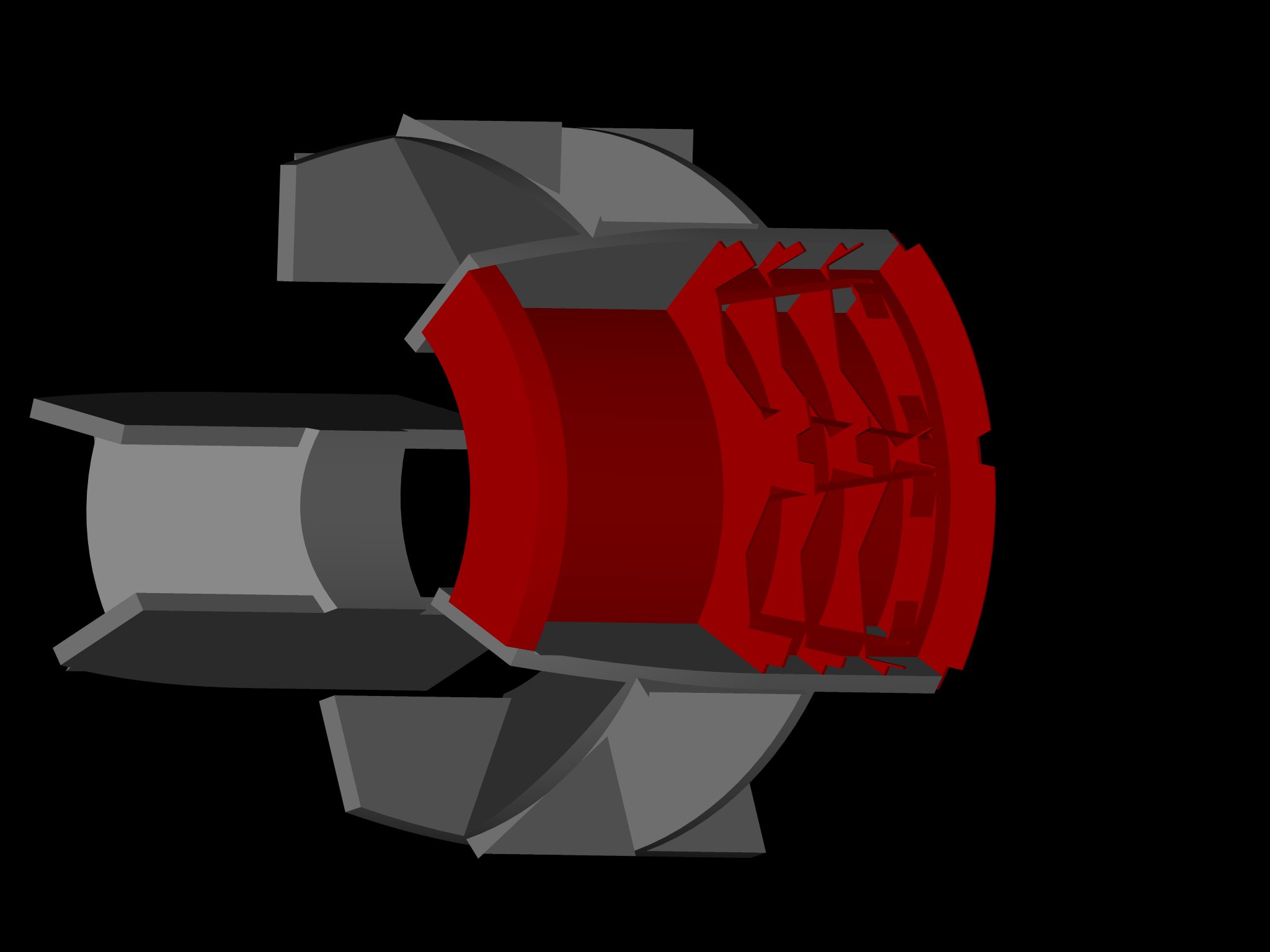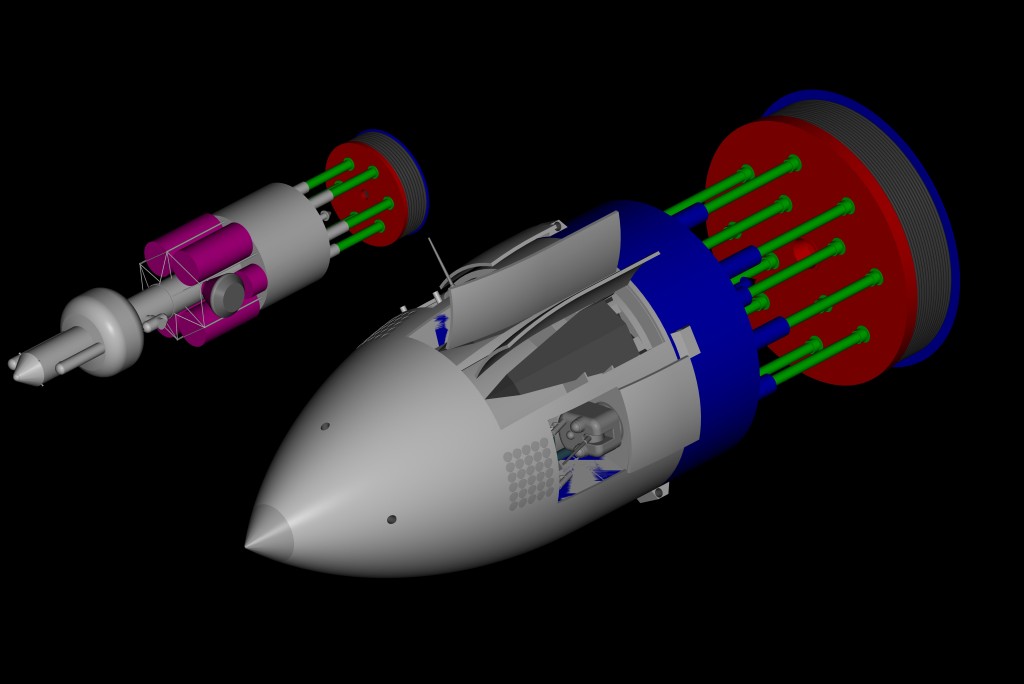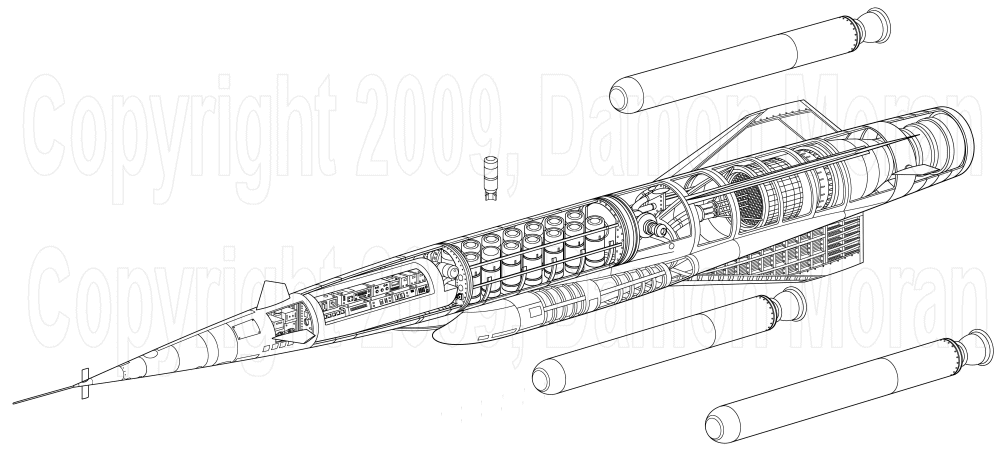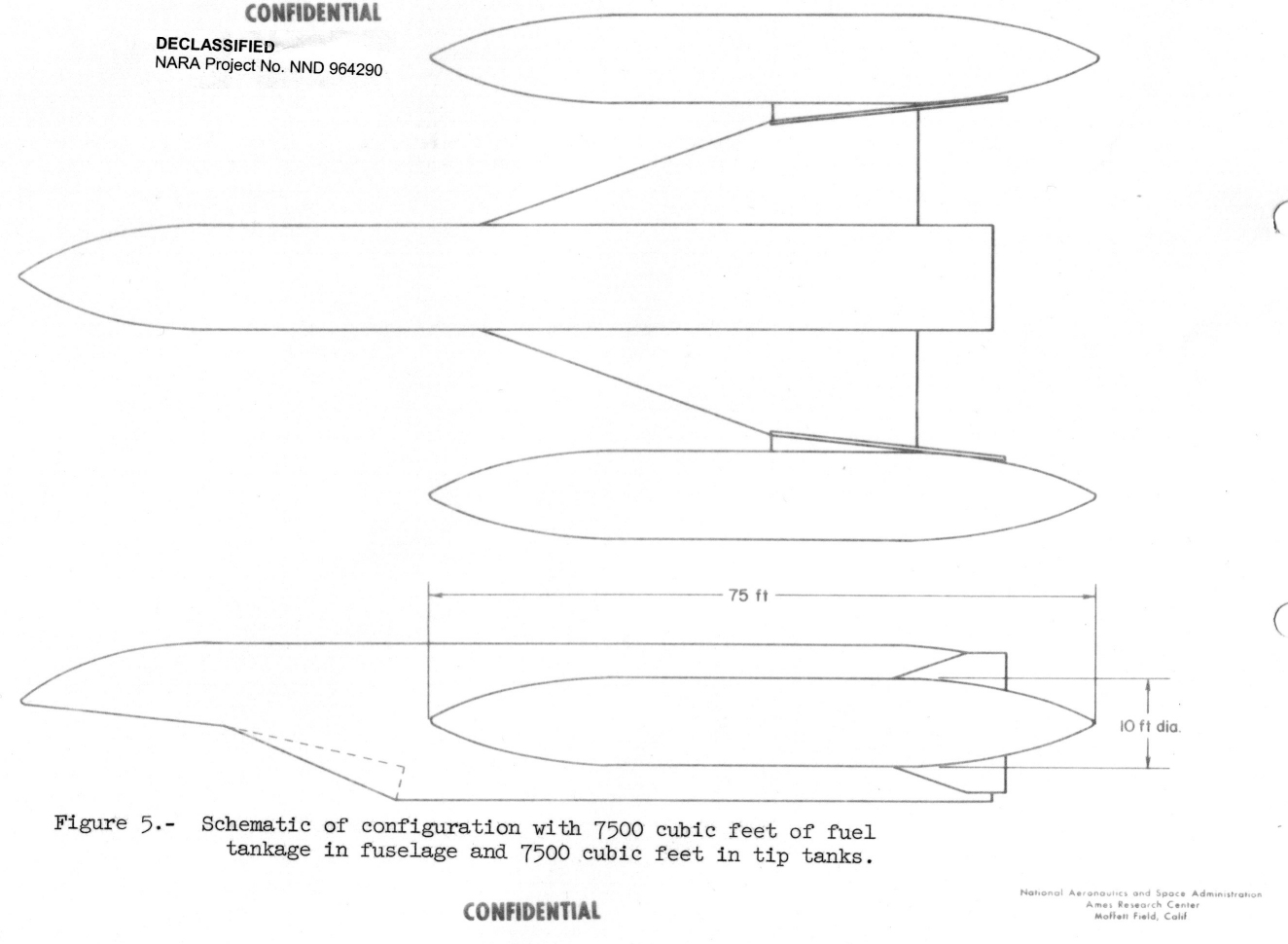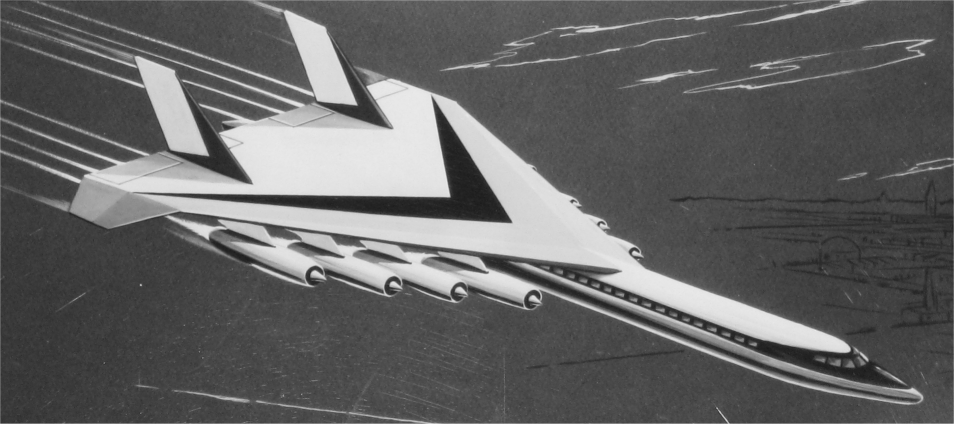As often happens, shortly after I published APR issue V2N2 with my guess work as to what the “landing boats” looked like I was given a small photo showing a piece of artwork that actually showed one of them. The artwork was not well presented in the photo, and was from a bad angle to really present the landing boats full configuration, but it was good enough to give me a pretty good idea about what the boats actually looked like. And so I’ve modeled this configuration for the Orion model as opposed to the original “dart.”
Progress continues of detailing the Orion model, with so far a lot of focus on the primary weapons bays and the doors for the landing boat bays. The CAD model as originally “built” was meant solely as a piece of illustration for an issue of Aerospace Projects Review, so a lot of the features needed to be reworked in order to function as real-world parts. Below are some images… some are renderings, some are simple screenshots.
The forward section is coming along. The shell is one piece (it should probably
be split into at least two for casting & shipping); the silo doors are recessed;
the secondary weapon doors are “scribed;” one pair of boat doors are open, while
two pair are “scribed;” the primary weapons bays are open. The interior walls &
decks are in place, but need some more work.
Next up is a model for Fantastic Plastic… the General Atomics “Orion Battleship” in 1/288 scale. This vehicle was described in Aerospace Projects Review issue V2N2. The model will be produced via stereolithography, using as a basis a modified version of the CAD model I created for that issue of APR. Diameter over the pusher plate will be 9 cm/3.6 inches; overall length will be 27 cm/10.6 inches. It will include parts allowing it to be built as shown here… three full primary weapons bays and two landing boat bays with boats (the boats will be different than shown here, as I’ve found new info since V2N2 came out, changing the configuration of the boats notably).
Note: the 10-meter Orion shown here is not being produced for Fantastic Plastic.
Work continues on the 2nd edition of the Project Pluto posters. The original version was 10X30 inches; the next edition will be 12X36. Several changes will be made to the layout and design of the poster, but retaining primary place will be Damon Moran’s artwork. In aid of the alrger print size, Damon is in the process of completely reworking his cutaway artwork of the Pluto missile. The original pen-and-ink drawing is being redone in vector format, allowing infinite resizing, as well as making coloration easier. A first draft of the line art has come in, and I thought I’d share:
An originally classified report produced at NASA-Ames described in general terms the sort of research vehicle that would be needed in support of the then-current ASP (AeroSpacePlane) program. ASP was a forward thinking but unfortunately far too technically difficult program to develop airbreathing single- or two-stage-to-orbit operational spaceplanes, or “orbital aircraft,” for military purposes. The same basic idea would arise again in the 1980s with the X-30 NASP. Much more on the ASP program and its competitors will be shown in APR issue V2N5 (still working on V2N4).
NASA-Ames envisioned a research aircraft using ACE (Air Cycle Engine) propulsion systems… basically rockets that use air compressed and ducted from an inlet. While initial testing would use turbojets and normal rockets for lower speed flight, by the end of the testing program it was planned to have a fully integrated ACE system. Coupled with external drop-tanks, it was expected that the performance capability of the research plane would be expanded to include orbital flight.
More on this design will be provided in APR V2N5.
Before I got suckered into going out to Maryland last year, I started selling prints of “Aerospace Projects Review” artwork… not artwork that I’ve published in APR, per se, but artwork created specifically for APR: http://up-ship.com/blog/art/index.htm
I just got things going when the corporate world tricked me back in, causing me to shut the project down. Well, despite (or perhaps because of) the fact that my vaguely similar idea of selling prints of my photos was a complete failure, I’d like to restart that effort.
The two I originally released were a 10X30 inch Project Pluto poster and a 12X16 version of the APR issue V1N4 cover. I’d prefer to release a second edition of the Pluto poster… 12X36 inches, with (hopefully) updated art and more data & diagrams. Being larger, it’d cost more… probably in the range of $30. And along with the V1N4 cover art, I’d like to do the same with the V2N2 cover art, and perhaps the V1N5 cover as well (with or without the APR cover text).
If this is of interest to anyone, feel free to let me know.
Additionally, I was directed to the eBay store of some feller who is selling “blueprints,” many of which appear to be cheap prints of many of the aircraft and spacecraft drawings I offer for sale. Someone simply printed ’em off and ran a bunch of copies. Not sure that there’s anything I can, or even should, do about this; while I tend to put a lot of effort into preparing the drawings (I’ve been working for months on some, cleaning them up and repairing them and making them generally presentable… you have no idea how much meticulous eye-strain goes into preparing some of these), they are of course not *my* drawings, as such. So it’s annoying to watch someone copying my effort this blatantly, but what’re-ya-gonna-do. Still, it brings up a thought.
This guy on eBay wants fifteen bucks minimum (with seven bucks shipping) for a single sheet, 24X36. Shown below are two photos of his version of my Saturn V inboard profile.
Now, I don’t know if this guy is actually moving product. But clearly he thinks he can. And if he can swipe my business *products, * I can swipe his business *model.* So… opinions on the idea of selling prints? There are three distinct variables:
1) High quality photo paper in color, as with the posters discussed above… and with equivalent prices. The Saturn V done 36 inches wide ( and about 7 inches high) would run about $15-$20.
2) “Meh” quality paper in color… about sixty percent as expensive. Call it $12-$15 or so for the 36-inch wide Saturn V.
3) “Meh” quality paper in black and white… relatively dirt cheap. Probably something along the lines of $5 for the Saturn V print (with additional shipping… probably around $5 for up to a dozen-ish prints of various sizes).
The Saturn V would look good printed up to six feet in length. I know this for a fact as the original is framed on my wall. A six-footer in color would be impressively expensive (somewhere north of $60), but in B&W it’d be quite reasonable… $12-$15 or therabouts.
A free download of any one item under $20 to the first responder to accurately ID the aircraft that goes along with this cockpit:
Is it an airplane? If so, is it unusual? A helicopter? If so, is it unusual? Something else entirely?
I’ll give this one till the weekend or so. I suspect that *somebody* will recognize this one.
I create a great many three-view drawings using CAD programs for Aerospace Projects Review and other efforts. Many books produce new three-views rather than showing the original drawings. The reasons for this are many, but some of the most important include:
- New drawings can be much clearer than the originals
- New drawings can “repair” damaged drawings
- New drawings can be conveniently put into a constant scale
- New drawings on occasion avoid certain copyright issues
However, when the original drawing is not shown, it is difficult, if not impossible, for the reader to determine just how accurate that new drawing may be. Often, especially in the case of “Luftwaffe, 1946” books, the drawings are based on scant description at best, and can often be described as pure invention on the part of the draftsman. But without further information, that is not known to the reader. As a result, many designs that can be safely described as inaccurate nonsense gain cache as “real.” This is a particular annoyance to me, and one I don’t wish to contribute to. Consequently, all drawings I create for APR will have an indication of the “reliability” of the drawing, through a simple grading system, 1 through 6.
- A “source grade” of 1 indicates that the drawing is a provisional reconstruction, based on text description, not actual drawings.
- A “source grade” of 2 indicates that the source drawing is at best crude, often a notional design with just a sketch. Alternatively, the source image is an isometric or perspective artists impression rather than orthogonal drawings.
- A “source grade” of 3 indicates that the source drawings are serviceable but simple.
- A “source grade” of 4 indicates that the source drawings were clear, but the design was not entirely detailed.
- A “source grade” of 5 indicates that the source material was detailed, clear and unimpeachable.
- And finally, a “source grade of 6 indicates that the drawing presented is the actual source drawing, not a reconstruction. A grade 6 drawing can thus run the gamut from blurry to crystal clear, from spartan to detailed.
In consultation with several other authors (including Dennis R. Jenkins, author of “Hypersonic The Story of the North American X-15” and “Space Shuttle, The History of the National Space Transportation System,” and Robert Godwin, editor of Apogee Books’ “NASA MissionReports”), this system has been refined, and changed somewhat from when I first used it in “US Bomber Projects Preview.” Grade six has been added, and instead of text describing the source grade, a standardized graphic has been created. A numeral, one through six, inside a circle inscribed within a square will be added to the drawing, either within the body of the art itself, or at the end of the caption (in APR, the source grades are located at the end of the captions). The intent is to be clear yet unobtrusive.
In short, the source grade is a measure of how much you can trust the drawings you’re looking at.
Here are some examples, showing the original source and what the grade would be for a reconstruction based on it.
—————

A reconstruction based on a pure text description rates a 1: 
A reconstruction based on an artists impression to create a 3-view rates a 2: 
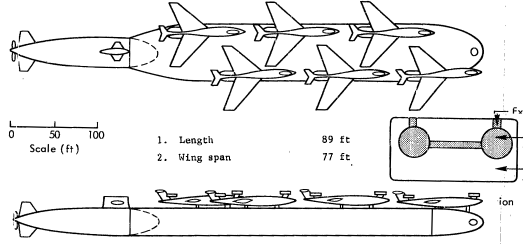
A reconstruction based on a very crude 3-view also rates a 2: 
————

A reconstruction based on a very simple, but basically accurate, 3-view rates a 3: 
————
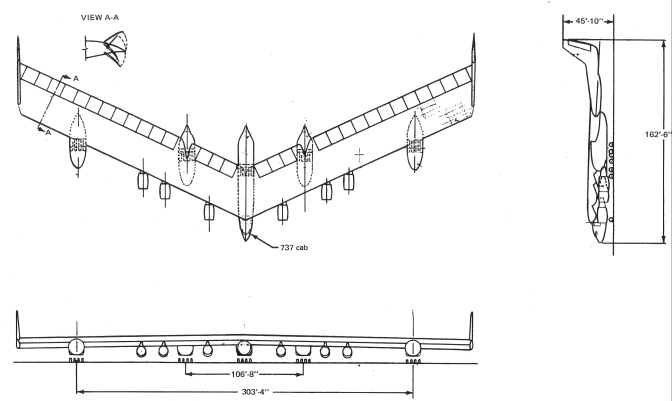
A reconstruction based on a clear 3-view rates a 4: 
————

A reconstruction based on a “perfect” drawing rates a 5: 
————

And of course, if the actual original drawing is presented, that – no matter what the quality or detail of the drawing – rates a source grade of 6: 
————






